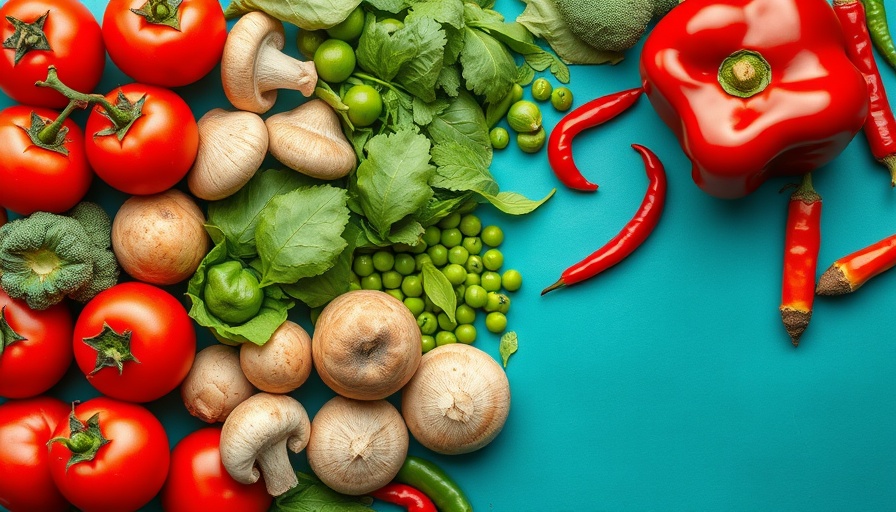
Understanding Endometriosis: The Struggle for Relief
Endometriosis, a chronic condition that affects millions worldwide, unfolds when tissue similar to the lining inside the uterus (the endometrium) starts growing outside it, leading to intense pain, heavy bleeding, and various other symptoms. The quest for effective treatment often leads patients to seek out alternatives, including dietary changes, as traditional medical solutions usually entail hormonal therapies and surgical interventions. The hope for relief through food might seem like a double-edged sword, providing a glimmer of empowerment amidst a challenging diagnosis.
The Role of Diet in Managing Endometriosis
There is mounting interest surrounding how dietary changes can alleviate the symptoms of endometriosis. A recent international survey comprising over 2,500 participants revealed intriguing data that suggests dietary adjustments may indeed have a positive impact. Approximately 45% of respondents who reduced their gluten and dairy intake reported feeling better, while more than half noticed decreased pain after limiting alcohol and caffeine consumption. While these findings are compelling, they do stem from self-reports, making it difficult to establish causation definitively.
Inflammation and Its Connection to Food Choices
At the heart of these dietary recommendations lies the concept of inflammation. Many of the best foods to consume when managing endometriosis focus on anti-inflammatory properties. Fruits, vegetables, omega-3 fatty acids from fish, and nuts are heralded as beneficial choices that may help to soothe inflammatory responses in the body, which can exacerbate pain and bloating. Conversely, certain foods like processed items, refined sugars, and trans fats are often linked to increased inflammation and may trigger symptom flare-ups.
Exploring Dietary Changes: Practical Tips
The journey towards an endometriosis-friendly diet doesn’t have to be overwhelming. Here are some actionable insights:
- Embrace Whole Foods: Focus on whole fruits, vegetables, grains, and lean proteins. The cleaner your diet, the better you might feel.
- Consider Low-FODMAP Options: Many people with endometriosis have found relief through the low-FODMAP diet, which eliminates certain carbohydrates that can lead to bloating and discomfort.
- Stay Hydrated: Drinking plenty of water can aid in digestion and help to lessen bloating.
Emotional and Psychological Support Through Diet
Adopting dietary changes can be empowering for individuals suffering from endometriosis. Taking charge of one’s health through intentional living practices—like cooking at home and planning meals—creates a sense of agency while also promoting family-centered living. Moreover, sharing meals with loved ones can strengthen connections, creating a supportive environment in which to navigate the challenges of the condition.
Common Misconceptions About Endometriosis and Diet
One major misconception is that a single "miracle food" can cure endometriosis. In reality, managing symptoms often requires a multifaceted approach that includes various lifestyle choices, such as exercise and stress management, alongside diet. It's important to work closely with healthcare professionals to develop a personalized strategy that honors individual needs and promotes overall well-being.
The Future of Dietary Research in Endometriosis
The landscape of dietary research related to endometriosis is evolving, and while more rigorous randomized controlled trials are needed for conclusive evidence, the existing data shines a light on potential pathways for patients seeking relief. Ongoing studies may further clarify the connection between diet and symptom management, allowing individuals to make informed choices for their health.
Conclusion: Taking Control of Your Health
Navigating the complexities of endometriosis can be daunting, but exploring dietary choices offers a potential avenue to mitigate symptoms and enhance quality of life. By adopting a cleaner, more intentional approach to eating, incorporating practices rooted in faith and family, individuals can foster a positive living environment that reflects values of health and self-care.
As we consider the power of food in managing symptoms, it’s essential to approach dietary changes as part of a broader lifestyle—one that emphasizes balance, personal responsibility, and family-first priorities. Make exploring an endometriosis-friendly diet part of your journey toward understanding and managing the condition.
 Add Element
Add Element  Add Row
Add Row 



 Add Row
Add Row  Add
Add 


Write A Comment